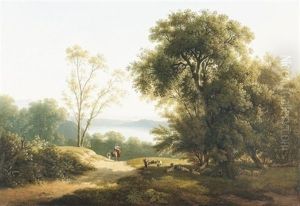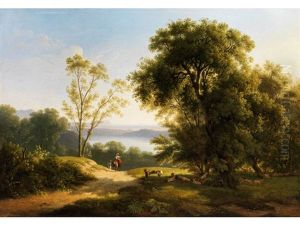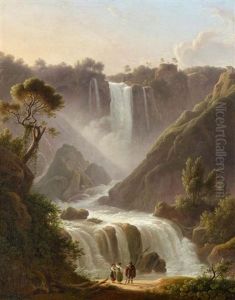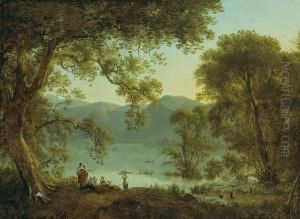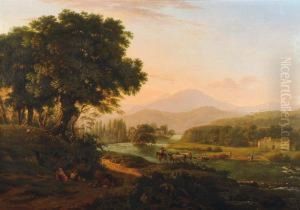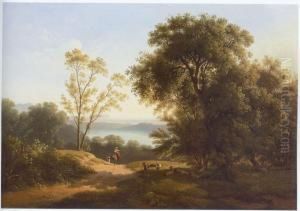Martin Verstappen Paintings
Martin Verstappen, born in 1773 in Antwerp, Belgium, was a distinguished landscape painter whose artistic journey spanned the late 18th and early 19th centuries, a period that witnessed significant transformations in the European art scene. His contributions to the landscape genre have earned him a respectable place in the annals of art history, particularly within the context of Belgian art.
Verstappen's early life and training were deeply rooted in the rich artistic milieu of Antwerp, a city renowned for its vibrant cultural life and as a hub for the Northern Renaissance. It was here that he honed his skills, drawing inspiration from the lush Belgian landscapes and the works of earlier masters. Though specific details about his education are sparse, it is known that he was part of the broader movement of Romanticism that swept through Europe during his lifetime. This movement emphasized emotion and individualism, a departure from the classical norms, and Verstappen's landscapes vividly capture the Romantic spirit through their dynamic compositions and expressive use of light.
Throughout his career, Martin Verstappen exhibited a keen interest in depicting natural scenes, from serene pastoral landscapes to the more rugged, untamed aspects of the natural world. His paintings often feature meticulous details and a rich palette, characteristics that have made his works admired for their realism and emotional depth. Despite the fact that landscape painting was not as highly regarded as historical or portrait painting during much of his lifetime, Verstappen's commitment to the genre helped elevate its status and influence among his contemporaries and successors.
Verstappen's contributions to art were not limited to his paintings. He was also involved in the artistic community of his time, participating in exhibitions and engaging with other artists. His works were collected and appreciated by art lovers and patrons, which helped cement his reputation both in Belgium and abroad.
Martin Verstappen passed away in 1852, leaving behind a legacy that continues to be celebrated for its contribution to the development of landscape painting. His ability to capture the beauty and complexity of the natural world has ensured that his works remain appreciated by art historians and enthusiasts alike. In examining Verstappen's career, one can see a reflection of the broader trends in European art of the period, as well as a deeply personal commitment to exploring the landscape as a source of artistic inspiration.





